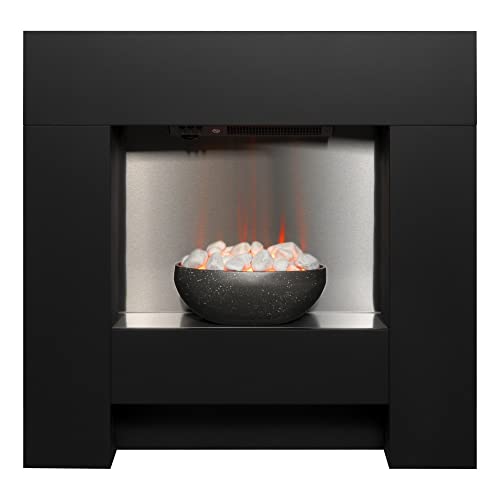The Worst Advice We've Received On Fireplace
The Charm and Functionality of Fireplaces: A Comprehensive Guide
Fireplaces have actually long been a central function in homes, signifying heat, companionship, and comfort. They are available in numerous styles, products, and fuel types, catering to the choices and requirements of varied property owners. This post dives into the complex world of fireplaces, exploring their history, types, installation factors to consider, and upkeep suggestions, while supplying FAQs to attend to typical questions.
A Brief History of Fireplaces
Historically, fireplaces functioned as the foundation for cooking and heating homes. In ancient times, an open hearth was often positioned in the center of a residence. Over centuries, architectural improvements helped with the development of more sophisticated styles, progressing from basic stone structures to elaborate mantels that administer over modern home.
Secret Historical Milestones:
- Ancient Times: Open fires in caves and primitive huts for warmth and cooking.
- Middle Ages: Large, commonly centralized chimney structures in great halls of castles.
- Renaissance: Decorative mantels and styles gain appeal, with the fireplace becoming a symbol of wealth and status.
- Industrial Revolution: Advancements in materials and producing permit a broader series of fireplace styles.
- Modern Era: Gas and electric fireplaces end up being prevalent, enabling for increased convenience and security.
Types of Fireplaces
Today, various kinds of fireplaces are offered, each with its distinct attributes. Below is a breakdown of the most common types:
Fireplace Type
Description
Pros
Cons
Wood-Burning
Traditional fireplaces sustained by wood.
Genuine experience, heat output.
Labor-intensive, needs proper venting/maintenance.
Gas
Fireplaces that use natural gas or lp.
Easy to utilize and maintain.
Less ambiance compared to wood.
Electric
Utilizes electrical power to create heat and flames.
Safe, no venting required.
Minimal heat output, higher energy expenses.
Bioethanol
Uses bioethanol fuel, producing clean flames.
Environmentally friendly, portable.
Requires routine refueling.
Pellet
Uses compressed wood pellets as fuel.
Clean burning, sustainable.
Requires power for operation.
Extra Considerations
When picking a fireplace, it is important to think about elements such as:
- Fuel Availability: Consider what fuels are readily available in your area.
- Area and Aesthetics: The size of your living area and your style preferences need to direct your choice.
- Structure Regulations: Always speak with regional guidelines to ensure compliance and safety.
Setup Considerations
Installing a fireplace involves more than merely positioning a structure in your house. Thorough preparation, expert input, and adherence to safety codes are vital. Here are some critical actions:
- Planning: Consider the size and kind of fireplace, where it will be positioned, and its desired use.
- Consultation: Hire a certified contractor to examine your home and make sure proper setup.
- Allows: Obtain any necessary structure permits from regional authorities.
- Products: Select appropriate materials for the fireplace and surrounding location. Contemporary Fireplaces are fire-resistant and developed for your fuel type.
Upkeep Tips for Fireplaces
Routine upkeep ensures your fireplace operates safely and effectively. Here are essential maintenance pointers classified by fireplace type:
Wood-Burning Fireplaces
- Chimney Cleaning: Have your chimney cleaned up each year to prevent creosote accumulation.
- Inspect for Damage: Check for cracks and damage to the firebox and chimney structure.
- Fire wood Storage: Store firewood far from your home to prevent insect problems.
Gas Fireplaces
- Log Inspection: Regularly examine ceramic logs for cracks and change if essential.
- Vent Cleaning: Ensure that vents are totally free from obstructions.
- Pilot Burner Check: Test pilot lights and ignition systems frequently.
Electric Fireplaces
- Cord Inspection: Frequently examine electrical cords for fraying or wear.
- Clean Surfaces: Wipe down surface areas regularly to get rid of dust and debris.
- Smoke alarm: Ensure smoke detectors in the area are functional.
Bioethanol and Pellet Fireplaces
- Fuel Storage: Store fuels in a cool, dry location far from direct sunshine.
- Routine Refueling: Monitor fuel levels and refuel as required.
- Ventilation: Ensure proper ventilation when utilizing these fireplaces.
FAQs About Fireplaces
Q1: Do I require an authorization to set up a fireplace?
Yes, the majority of towns need permits for fireplace installations to make sure safety and compliance with local building regulations.
Q2: How often should I clean my chimney?
It is advised to have your chimney cleaned a minimum of once a year, particularly if you utilize your fireplace regularly.
Q3: Can I convert a wood-burning fireplace to gas?
Yes, numerous house owners convert wood-burning fireplaces to gas for benefit, but seeking advice from an expert is suggested to ensure an appropriate conversion.
Q4: Do electric fireplaces produce heat?
Yes, electric fireplaces can produce heat; nevertheless, their primary function is often for atmosphere, making them an appropriate choice for those who want a fire look without substantial heating.
Q5: Are bioethanol fireplaces safe?
Bioethanol fireplaces are typically safe when used correctly; nevertheless, they need appropriate ventilation, and users must follow all maker guidelines.
Fireplaces not only include aesthetic appeal to homes however also provide useful heating options. With different types, styles, and maintenance requirements, homeowners can make informed choices that best fit their needs and lifestyles. Whether selecting the charm of a wood-burning fireplace or the convenience of a gas design, a fireplace can significantly improve a living space's comfort and atmosphere. As the hearth remains a focal point in homes, it continues to promote warmth, discussion, and connections among household and good friends.
